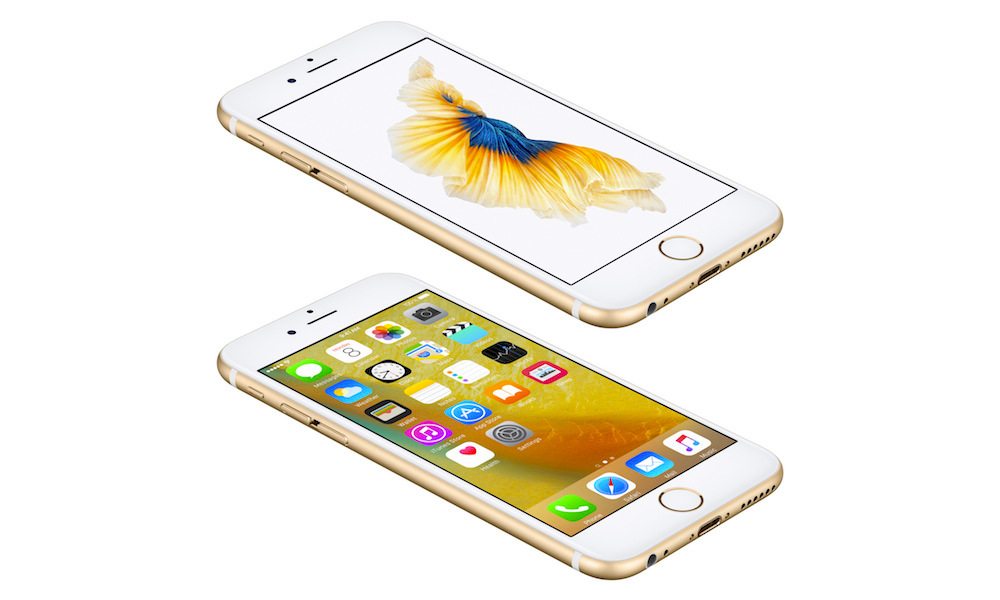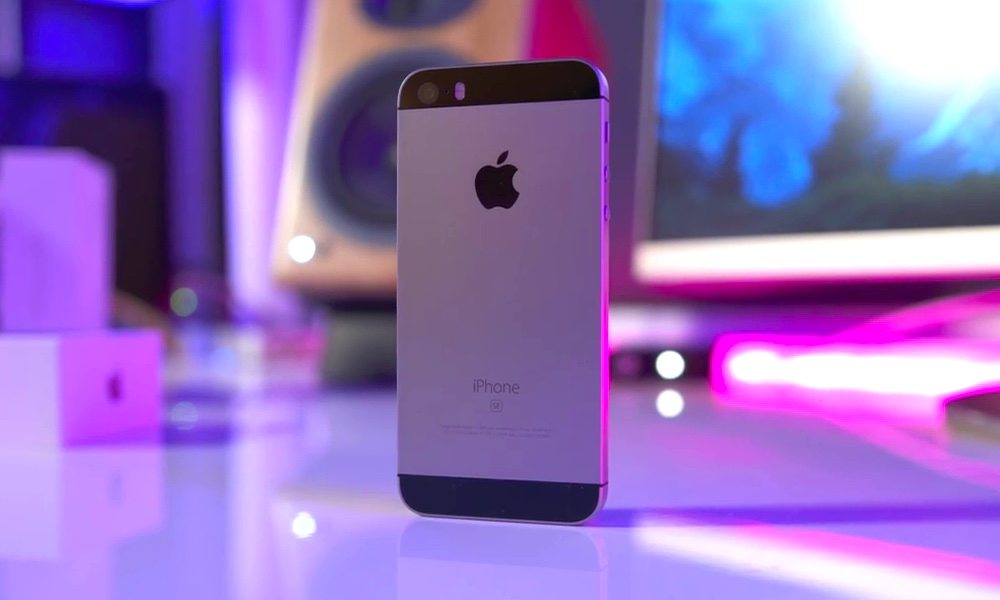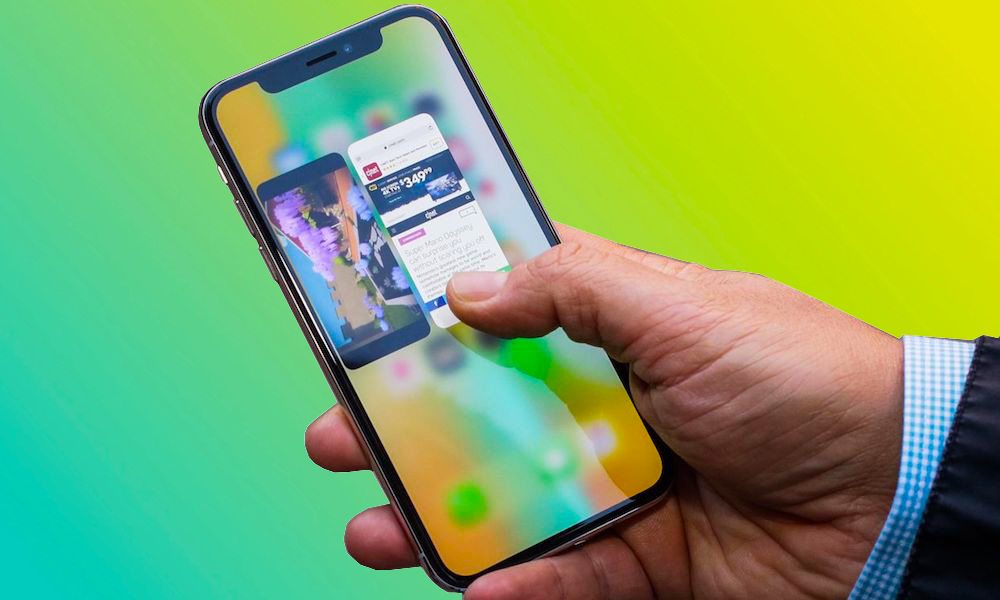Wow! Here’s How Much iPhone Prices Have Changed Since 2007
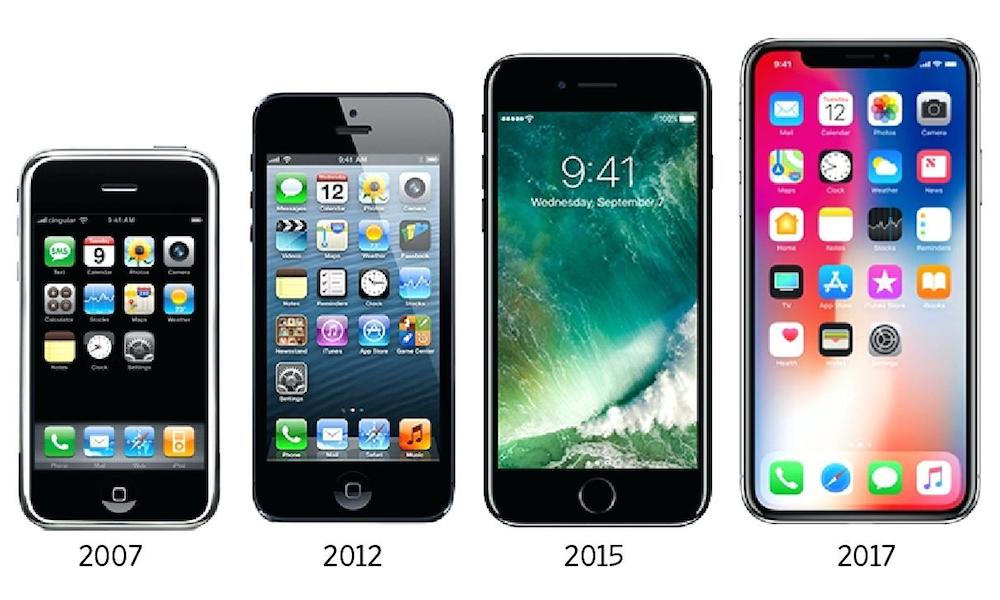 Apple
Apple
When some people hear "Apple," they think "overpriced," or "expensive." After all, the new iPhone X starts at $999 and the 256GB model retails for $1,149 (before sales tax). But how much have previous iPhones cost? And what did users get with each new upgrade? Continue reading to take a look at iPhone prices, starting with the original 2007 iPhone. We’ll look at the on and off contract prices, and the prices adjusted for inflation.
14 2007 Original iPhone
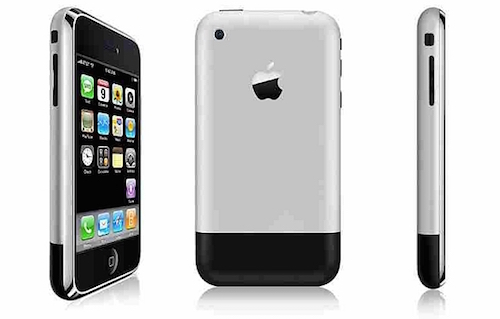
In January of 2007, Apple reinvented the phone. They took the iPod gave it a Multi-Touch display, cellular capabilities, a lot of sensors, and an Internet browser. It looked like something from the future and it changed the entire mobile landscape. Starting at $499 it was on the same playing field as many popular phones at that time. It didn’t have 3G or an app store, but it had much more than other phones had to offer.
Price
Contract Price (adjusted for inflation)
- 4GB: $499 ($596)
- 8GB: $599 ($715)
The original iPhone required a two-year contract. In the fall of 2007 the 4GB model was discontinued and the price of the 8GB iPhone dropped to $399. The following February Apple released a 16GB model for $499.
Design
The original iPhone only came in silver. It was made of aluminum with a glass face.
Key Features
- 2G networking
- 30 pin-connector
- 3.5” Multi-Touch widescreen display
- Built-in Safari Web browser and Wi-Fi connectivity
- 2-megapixel camera
- An accelerometer
- A proximity sensor
- An ambient light sensor
13 2008 iPhone 3G
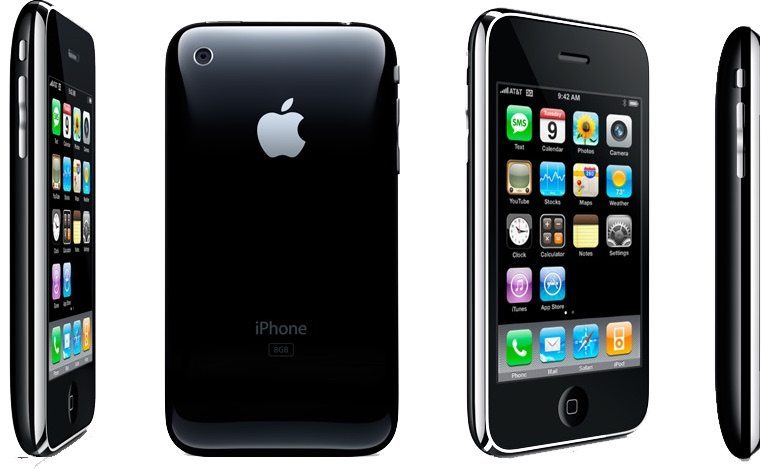
The iPhone 3G brought 3G networking and GPS to the iPhone. And iPhone OS 2.0 introduced the App Store, a dedicated Contacts app, and other improvements.
Price
Contract / No Contract (adjusted for inflation)
- 8GB: $199 / $599 ($226 / $681)
- 16GB: $299 / $699 ($340 / $795)
The 3G’s price was reduced to $99 with the launch of the iPhone 3GS. The iPhone 3G required a two-year contract with AT&T when it first launched.
Design
The 8GB iPhone 3G was only available in black. The 32GB model was available in black or white. It was made of plastic with a glass front and a metal bezel.
Key Features
- 3G networking
- Built-in GPS
- The App Store
12 2009 iPhone 3GS
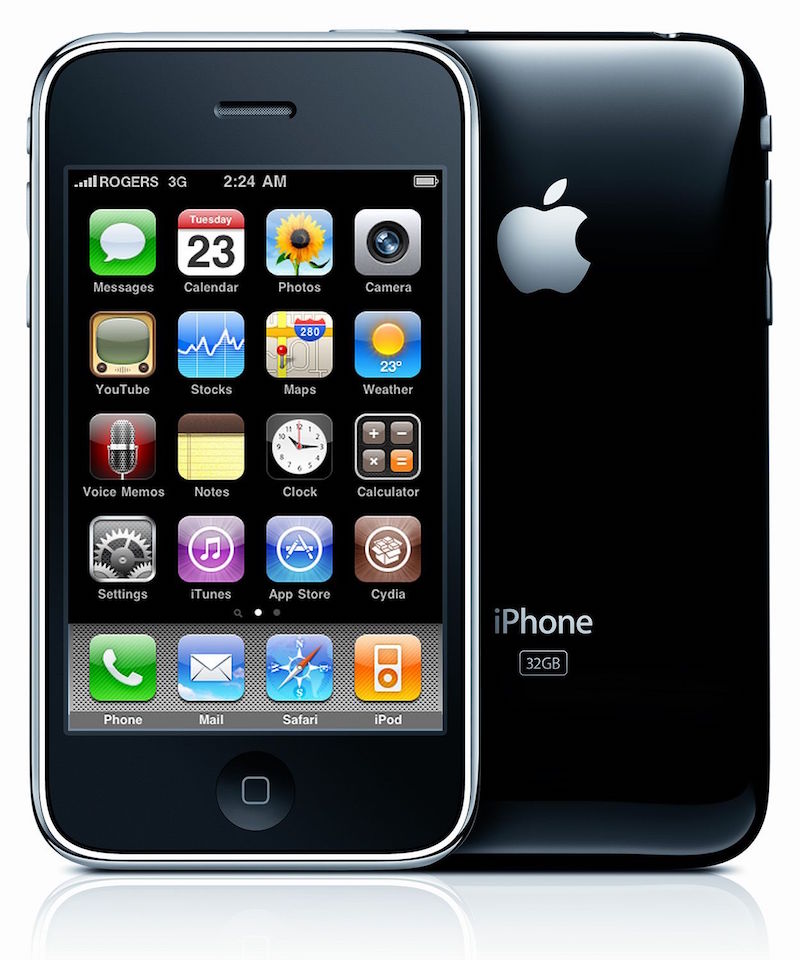
The iPhone 3GS was two times faster than the iPhone 3G. It had a built-in compass and support for basic voice commands. It had a better camera with the added ability to record video.
Price
Contract / No Contract (adjusted for inflation)
- 16GB: $199 /$599 ($229 / $691)
- 32GB: $299 / $699 ($345 / $806)
When Apple introduced the iPhone 4 they also released an 8GB version of the iPhone 3GS priced at $99 with a qualifying contract.
Design
The 8GB iPhone 3GS was only available in black. The 32GB model was available in black or white. It was made of plastic with a black glass front and a metal bezel. The Apple text on the back was changed from gray to silver.
Key Features
- 3-megapixel autofocus camera with video recording
- Hands-free voice control
- Built-in digital compass
11 2010 iPhone 4
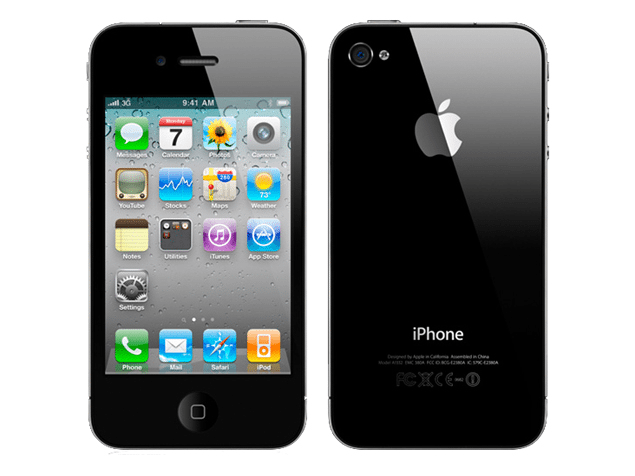
The iPhone 4 introduced the world to the ultra-crisp, Retina display. It had much better camera than its predecessors, a built-in gyro, and an all new front facing camera for video calls. iPhone 4 also featured a steel frame that doubled as an antenna.
Price
Contract / No Contract (adjusted for inflation)
- 16GB: $199 / $599 ($227 / $684)
- 32GB: $299 / $699 ($341 / $798)
When the iPhone 4s was launched, Apple offered a $99 iPhone 4. Later—when the iPhone 5 launched—customers could get a free iPhone 4 with a qualifying contract.
Design
The iPhone 4 was available in black or white. However, white was released later due to manufacturing issues. The device was glass on the front and back with a steel frame which acted as an antenna. Because of the design, holding the phone a certain way would block reception. This issue became known as “Antennagate.”
Key Features
- iBooks and Multitasking (app switching) introduced
- 3.5” Retina display (960 x 640 pixels)
- Front facing camera for FaceTime
- 5-megapixel camera with LED flash with HD video recording
- A4 processor
- 3-axis gyro
10 2011 iPhone 4s
The iPhone 4s fixed the antenna issues found in the iPhone 4. It was the first iPhone to feature Siri and had an improved camera. The iPhone 4s was launched alongside iOS 5 and iCloud. Apple’s iOS 5 introduced many popular features, including iMessage, Notification Center, and over-the-air (OTA) system updates.
Price
Contract / No Contract (adjusted for inflation)
- 16GB: $199 / $649 ($219 / $716)
- 32GB: $299 / $749 ($329 / $826)
- 64GB: $399 / $849 ($440 / $936)
When the iPhone 5 was launched, Apple offered a $99 iPhone 4s to customers with a qualifying contract.
Design
The iPhone 4s was available in black or white. The device was glass on the front and back with a steel frame which acted as an antenna. The steel frame had been redesigned to fix the issues from the iPhone 4.
Key Features
- iMessage and iCloud introduced
- Dual Core A5 chip
- Siri
- 8-megapixel camera with f/2.4 aperture and1080P HD video recording
9 2012 iPhone 5

The iPhone 5 was the first iPhone to feature a slightly bigger display. Apple replaced the 30-pin connector with its new Lightning standard. The device supported LTE and included the newly-designed EarPods. The iPhone 5 included iOS 6 which introduced Apple’s new Maps app. Maps was met with mixed—but mostly negative—reception.
Price
Contract / No Contract (adjusted for inflation)
- 16GB: $199 / $649 ($215 / $704)
- 32GB: $299 / $749 ($324 / $812)
- 64GB: $399 / $849 ($433 / $921)
Instead of reducing the price of the iPhone 5 with the introduction of the 5s, Apple introduced the iPhone 5C.
Design
The iPhone 5 was available in silver or slate. The iPhone 5 had a glass front and aluminum body, with glass “windows” on the top and bottom of the back.
Key Features
- First iPhone to include EarPods
- LTE networking
- Lightning connector
- Noise cancelling technology (for phone calls)
- A6 chip
- 4” Retina Display (1136 x 640 pixels)
8 2013 iPhone 5s
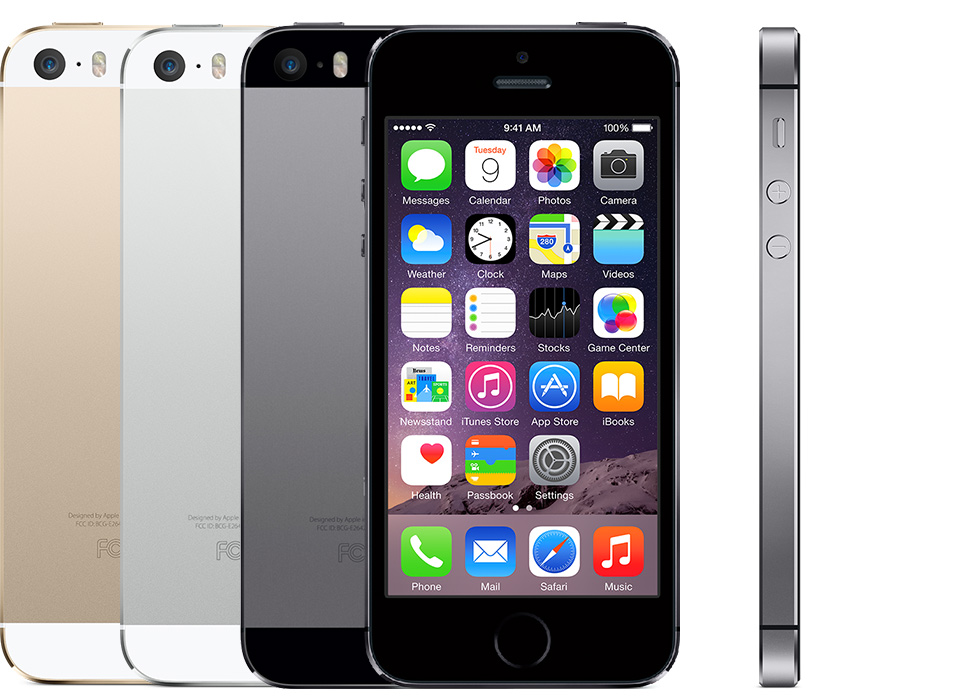
The iPhone 5s was the first iPhone to feature Touch ID. Touch ID allows users to unlock their iPhone using their fingerprint.
Price
Contract / No Contract (adjusted for inflation)
- 16GB: $199 / $649 ($212 / $692)
- 32GB: $299 / $749 ($319 / $799)
- 64GB: $399 / $849 ($425 / $905)
With the introduction of the iPhone 6 and 6 Plus, Apple lowered the price of the 16GB 5s to $99 and the 32GB 5s to $149 with a qualifying contract. The 64GB model was discontinued.
Design
The iPhone 5s was available in gold, silver or space gray. The iPhone 5s had a glass front and aluminum body, with glass “windows” on the top and bottom of the back.
Key Features
- A7 64-bit chip
- True Tone flash
- Touch ID
- HD FaceTime Camera
7 2013 iPhone 5c
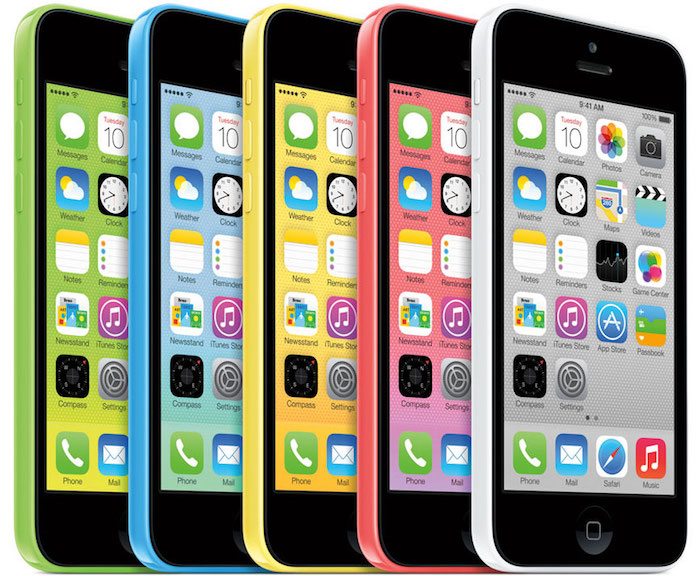
Apple called it “the most colorful iPhone yet.” The iPhone 5C was made of colorful plastic and was essentially a plastic iPhone 5.
Price
Contract / No Contract (adjusted for inflation)
- 16GB: $99 / $549 ($105 / $585)
- 32GB: $199 / $649 ( $212 / $692)
The iPhone 5c was later offered as a free 8GB device (on contract) when the iPhone 6 and 6 Plus launched.
Design
The iPhone 5c was available in blue, green, pink, yellow, or white. It had a black glass front and a polycarbonate body.
Key Features
- Available in five colors
- A6 chip
- 8-megapixel camera
6 2014 iPhone 6/6 Plus
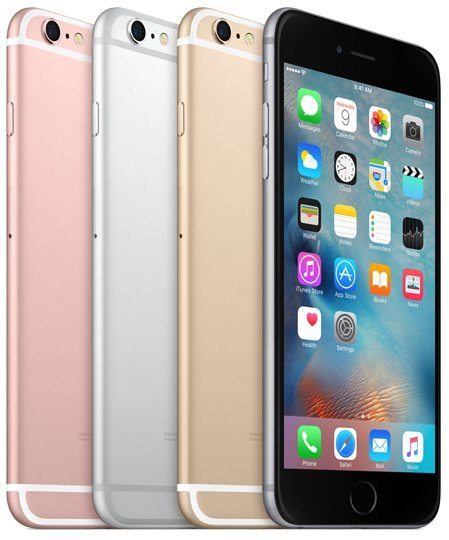
The iPhone 6 and 6 Plus saw the display sizes increase drastically compared to older iPhones. They featured Retina HD displays and a secure enclave enabling Apple Pay. The phone also had a barometer and a motion coprocessor. This allowed the phone to track a user’s steps.
Price
Contract / No Contract (adjusted for inflation)
- 16GB: $199 / $649 ($208 / $677)
- 64GB: $299 / $749 ($312 / $782)
- 128GB: $399 / $849 ($417 / $887)
- 16GB (Plus): $299 / $749 ($312 / $782)
- 64GB (Plus): $399 / $849 ($417 / $887)
- 128GB (Plus): $499 / $949 ($521 / $991)
After the iPhone 6s and 6s Plus were available, the iPhone 6 and 6 Plus were available starting from $99 and $199 respectfully.
Design
The iPhone 6 and 6 Plus was available in gold, silver, or space gray. It had a glass front and aluminum body.
Key Features
- 4.7” and 5.5” Retina HD displays
- A8 chip
- M8 motion coprocessor
- Built-in barometer
- Apple Pay
5 2015 iPhone 6s/6s Plus
The iPhone 6s and 6s Plus were the first iPhones to get 3D Touch and support for “Hey Siri.” They also feature improved cameras. 3D Touch made contextual menus, Peek and Pop, and Live Photos possible. It is available on all current iPhone models, except for the iPhone SE.
Price
No Contract (adjusted for inflation)
- 16GB: $649 ($677)
- 64GB: $749 ($782)
- 128GB: $849 ($886)
- 16GB (Plus): $749 ($677)
- 64GB (Plus): $849 ($886)
- 128GB (Plus): $949 ($990)
The iPhone 6s and 6s Plus are still available today. It’s $449 for a 32GB 6s and $549 for the 128GB variant. The 6s Plus comes in the same capacities at $549 and $649 respectfully. The iPhone 6s and iPhone 6s Plus were the first iPhones to be available for purchase via Apple’s iPhone Upgrade Program. The 6s and 6s Plus were also available with a qualifying contract starting at $199 for the 6s and $299 for the Plus model.
Design
The iPhone 6s and 6s Plus is currently available in gold, rose gold, silver, or space gray. It has a glass front and aluminum body.
Key Features
- A9 Chip
- M9 motion coprocessor
- Support for “Hey Siri”
- 3D Touch
- Stronger glass and 7000 series aluminum
- 12-megapixel iSight and 5-megapixel FaceTime HD cameras
- 4K video recording
4 2016 iPhone 7/7 Plus
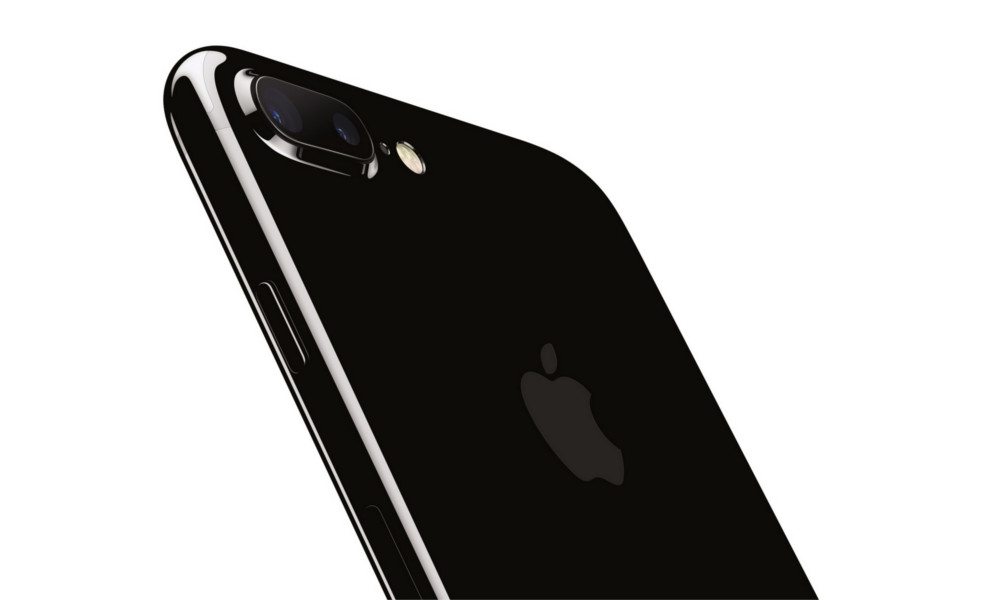
The iPhone 7 and 7 Plus came in six different colors and are the first iPhones to be water and dust resistant. They are also the first iPhones to have stereo speakers. The larger 7 Plus features an innovative dual camera system.
Price
No Contract (adjusted for inflation)
- 16GB: $649 ($670)
- 64GB: $749 ($773)
- 128GB: $849 ($877)
- 16GB (Plus): $749 ($773)
- 64GB (Plus): $849 ($877)
- 128GB (Plus): $949 ($980)
The iPhone 7 and 7 Plus are still available today. It’s $549 for a 32GB 7 and $649 for the 128GB variant. The 7 Plus comes in the same capacities at $669 and $769 respectfully.
Design
The iPhone 7 and 7 Plus is currently available in gold, rose gold, silver, black, or jet black. After launch a red (Product) RED model was made available for a limited time. Both variants have a glass front and aluminum body. iPhone 7 is water resistant.
Key Features
- A10 Fusion chip
- Water & dust resistance
- Stereo speakers
- Dual-camera system (7 Plus only)
- Optical image stabilization
- Quad-LED True Tone flash
- 7-megapixel FaceTime camera
3 2016 iPhone SE
The iPhone SE offers a smaller screen size with many of the same features found on the iPhone 6s and 6s Plus. However, it doesn’t feature 3D Touch.
Price
No Contract (adjusted for inflation)
- 16GB: $399 ($412)
- 64GB: $499 ($515)
The iPhone SE is still available today with upgraded memory capacities. It’s $349 for a 32GB 6s and $449 for the 128GB model.
Design
The iPhone SE is currently available in gold, rose gold, silver, or space gray. The iPhone SE has a glass front and aluminum body, with glass “windows” on the top and bottom of the back. The iPhone SE isn’t advertised as water resistant; however, a teardown of the device revealed it has water resistant seals. These seals do not mean it’s 100% water resistant.
Key Features
- A9 Chip
- M9 motion coprocessor
- 12 megapixel iSight camera
- 4K video recording
2 2017 iPhone 8/8 Plus

The iPhone 8 and 8 Plus feature a new glass and steel design that is reminiscent of the iPhone 4/4s, but looks similar to the iPhones 6/6 Plus, 6s/6s Plus, and 7/7 Plus. The phone features the same A11 chip found in the iPhone X and Qi wireless charging. The rear camera features support for Portrait Lighting.
Price
No Contract
- 64GB: $699
- 256GB: $849
- 64GB (8 Plus): $799
- 256GB (8 Plus): $949
Design
The iPhone 8 and 8 Plus are available in gold, silver, or space gray. The device is glass on the front and back with a steel frame. iPhone 8 and 8 Plus are water resistant.
Key Features
- Six-core A11 Bionic chip with three-core GPU
- Qi wireless Charging
- Portrait Lighting
- Quad LED True Tone Flash with Slow Sync
1 2017 iPhone X
Apple calls the iPhone X “the future of the smartphone.“ It features and all-screen design that is made possible by a 5.8” Super Retina OLED display. Because there is no home button, the iPhone X can be unlocked using facial recognition. It’s called “Face ID” and it’s made possible by the 7-megapixel TrueDepth camera system. Like the iPhone 8, the iPhone X features an A11 Bionic chip and Qi wireless charging. It also supports Portrait Lighting using both the front and rear cameras.
Price
No Contract
- 64GB: $999
- 256GB: $1,149
Design
The iPhone X is available in silver or space gray. The device is glass on the front and back with a steel frame. iPhone X is water resistant.
Key Features
- Six-core A11 Bionic chip with Neural Engine and three-core GPU
- Qi wireless charging
- 5.8” Super Retina, edge-to-edge, OLED display
- Support for HDR10 and Dolby Vision
- 7-megapixel TrueDepth camera system
- Face ID
- Animoji
- Portrait Lightning
- Quad LED True Tone Flash with Slow Sync
- Dual optical image stabilization
? Have iPhones Actually Become More Expensive?
There's no denying that smartphones are expensive—especially the iPhone. But if you look at iPhone over the years (and take inflation into account) the prices haven't changed that drastically when you consider the many innovative features and raw power that each new generation adds.
What's more is that now there is a wide variety of iPhones available and a number of different financing options. The most affordable device is the iPhone SE starting at $349 (or $14.54/month). And the most expensive iPhone is the 256GB iPhone X which retails for $1,149 (or $56.16/month).
In addition to multiple price points, iPhone comes in multiple screen sizes and colors. There are four screen sizes: 4", 4.7", 5.5", and 5.8". And seven colors: two different golds, rose gold, black, jet black, space gray, and silver. Capacities for the iPhone range from 32GB to 256GB.
Keeping all of that in mind, the iPhone can be a very expensive device; but it doesn't have to be. Apple provides many iPhone options so you can find the device that's right for your budget.


